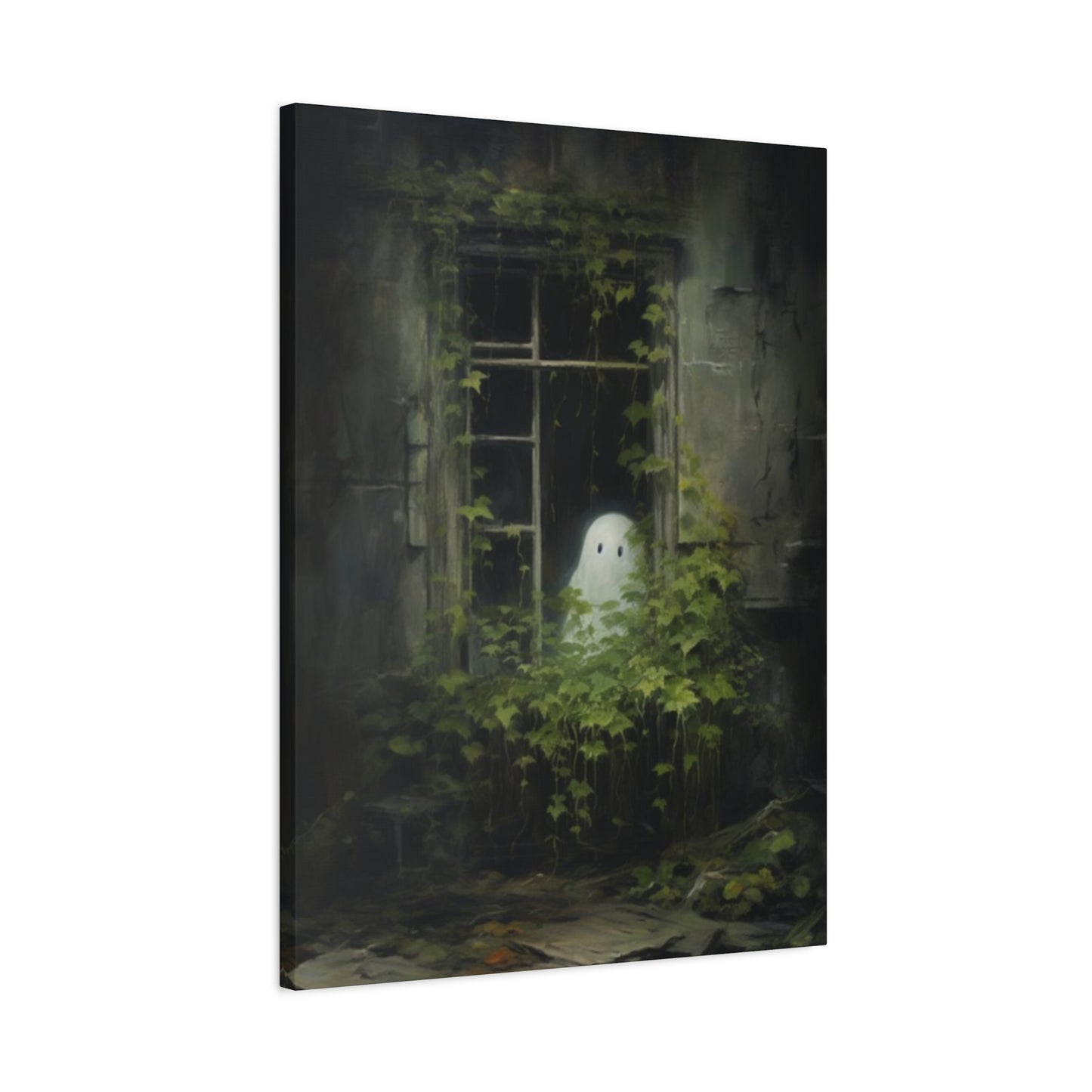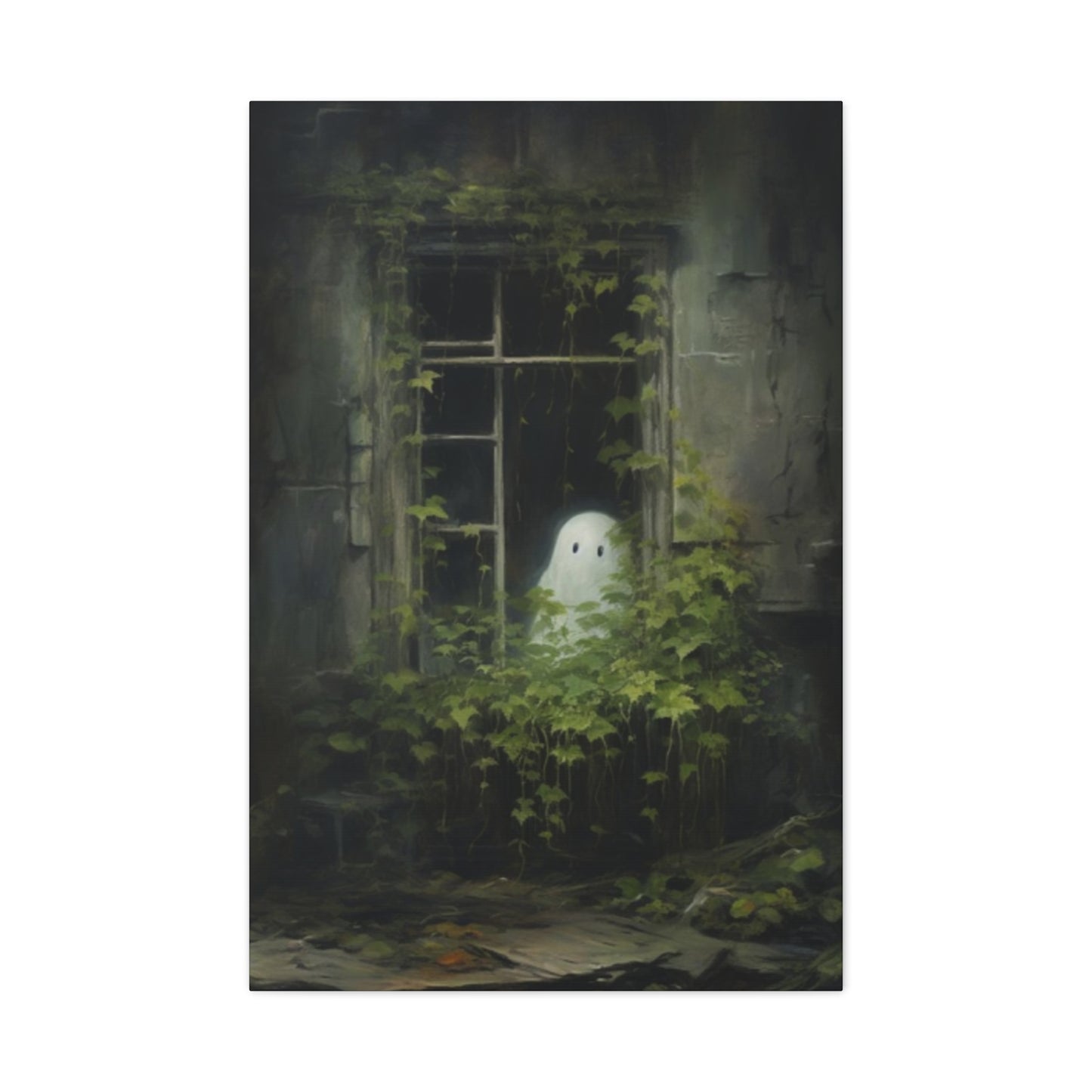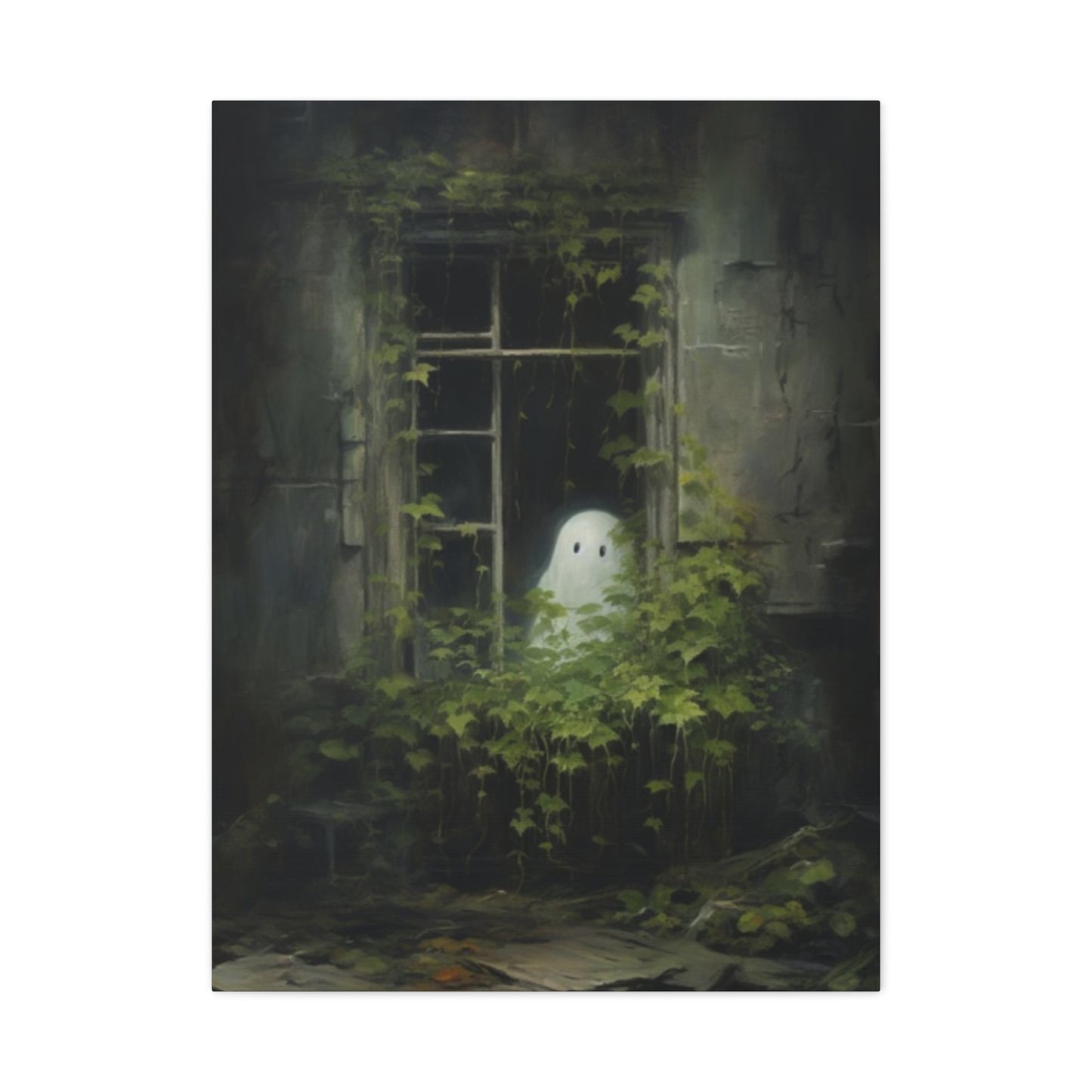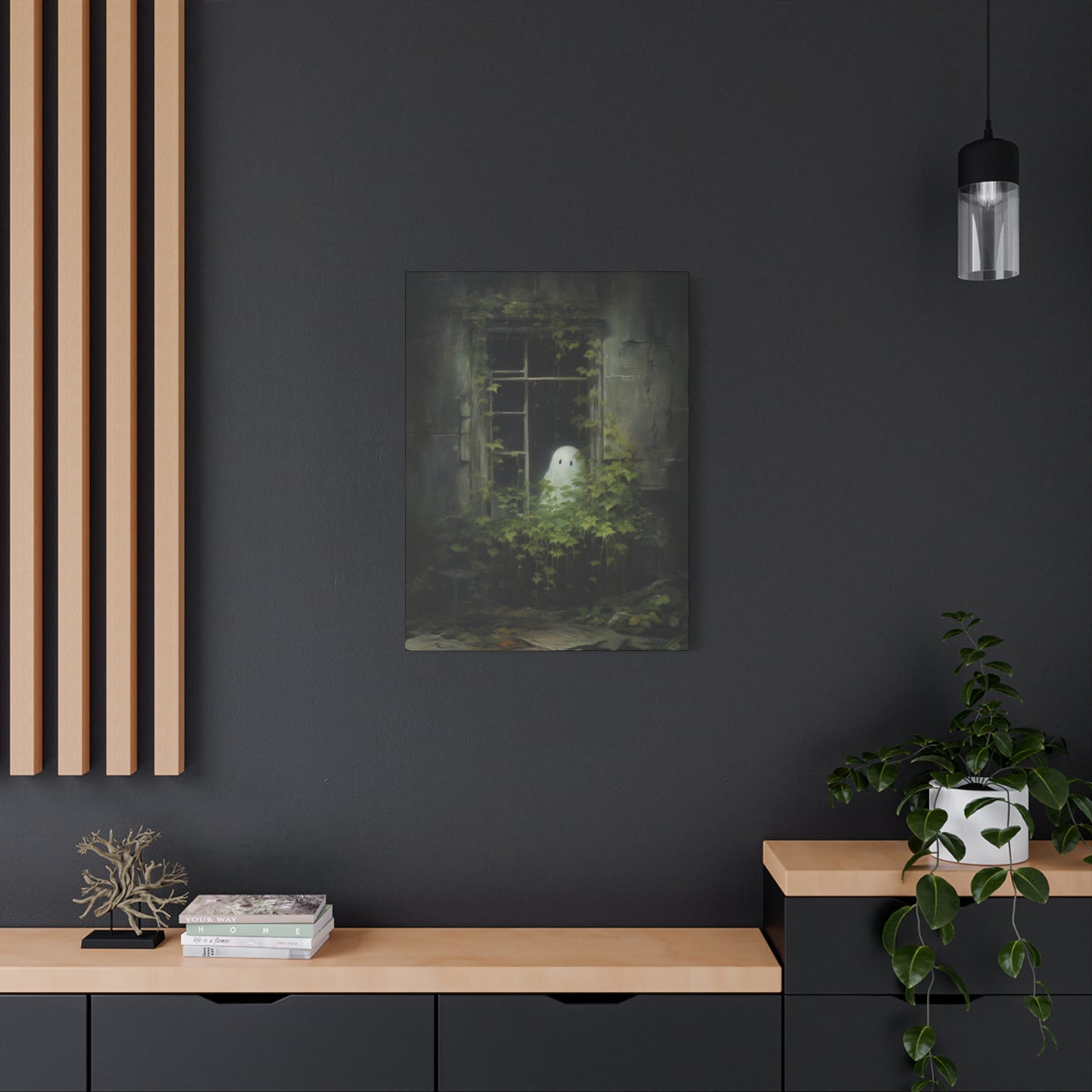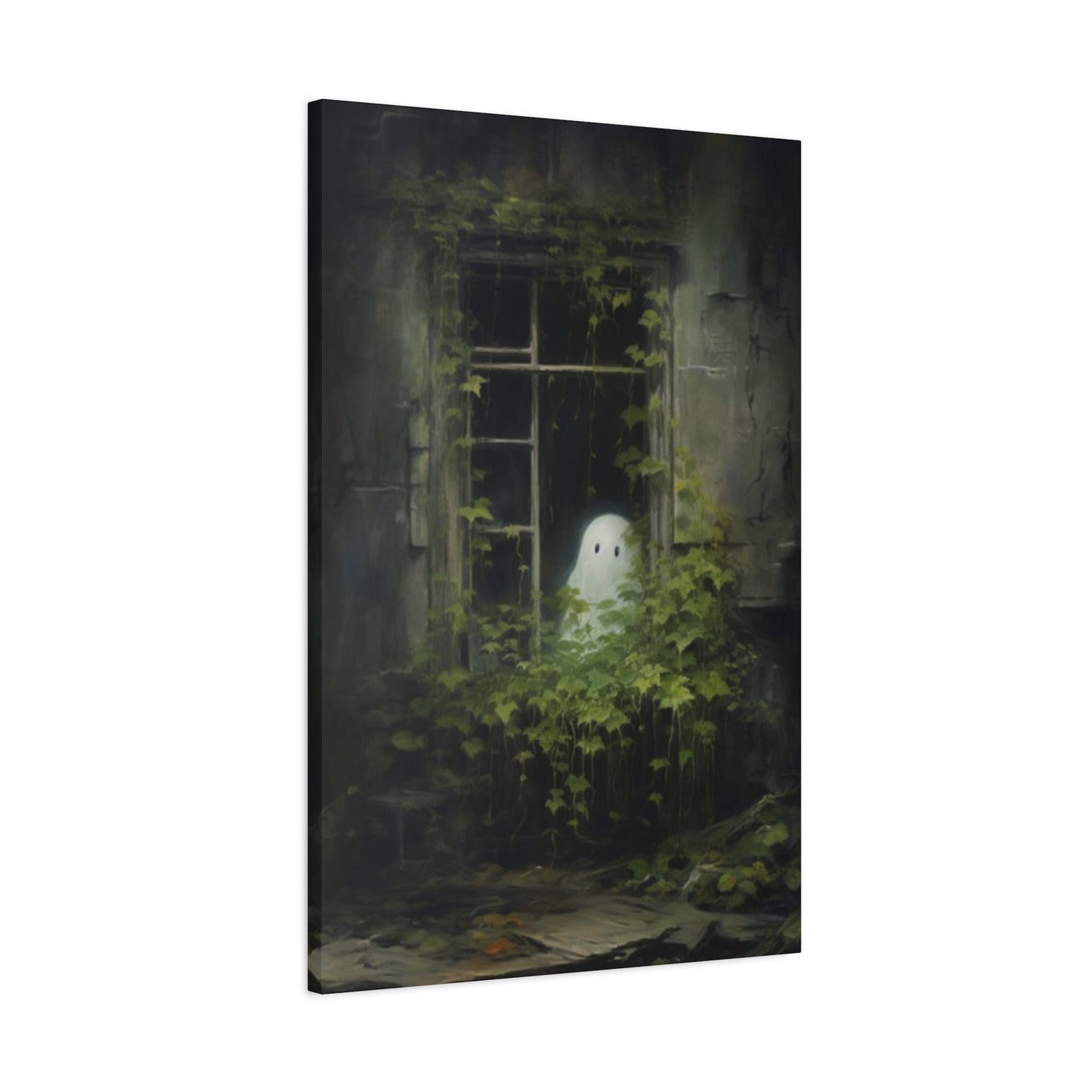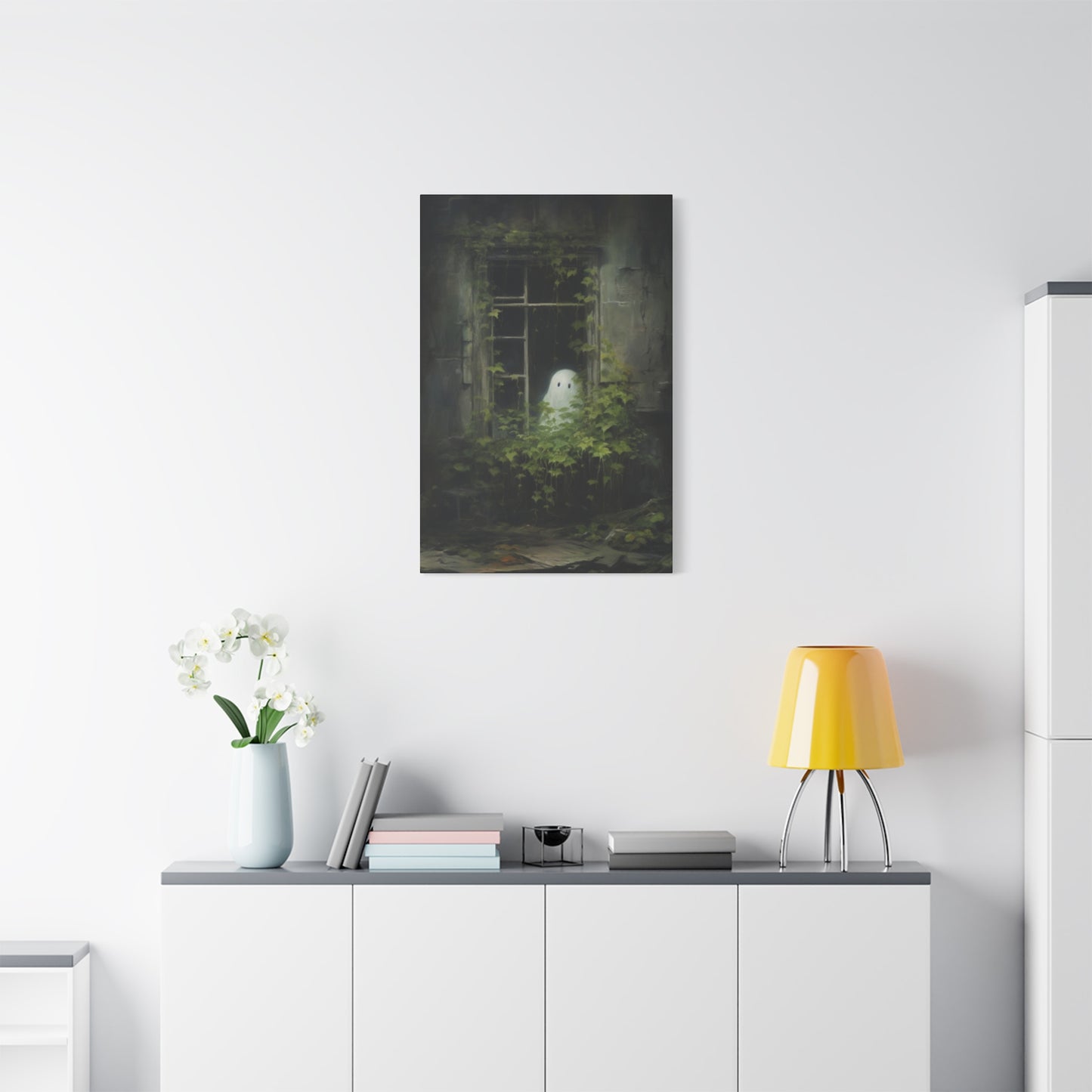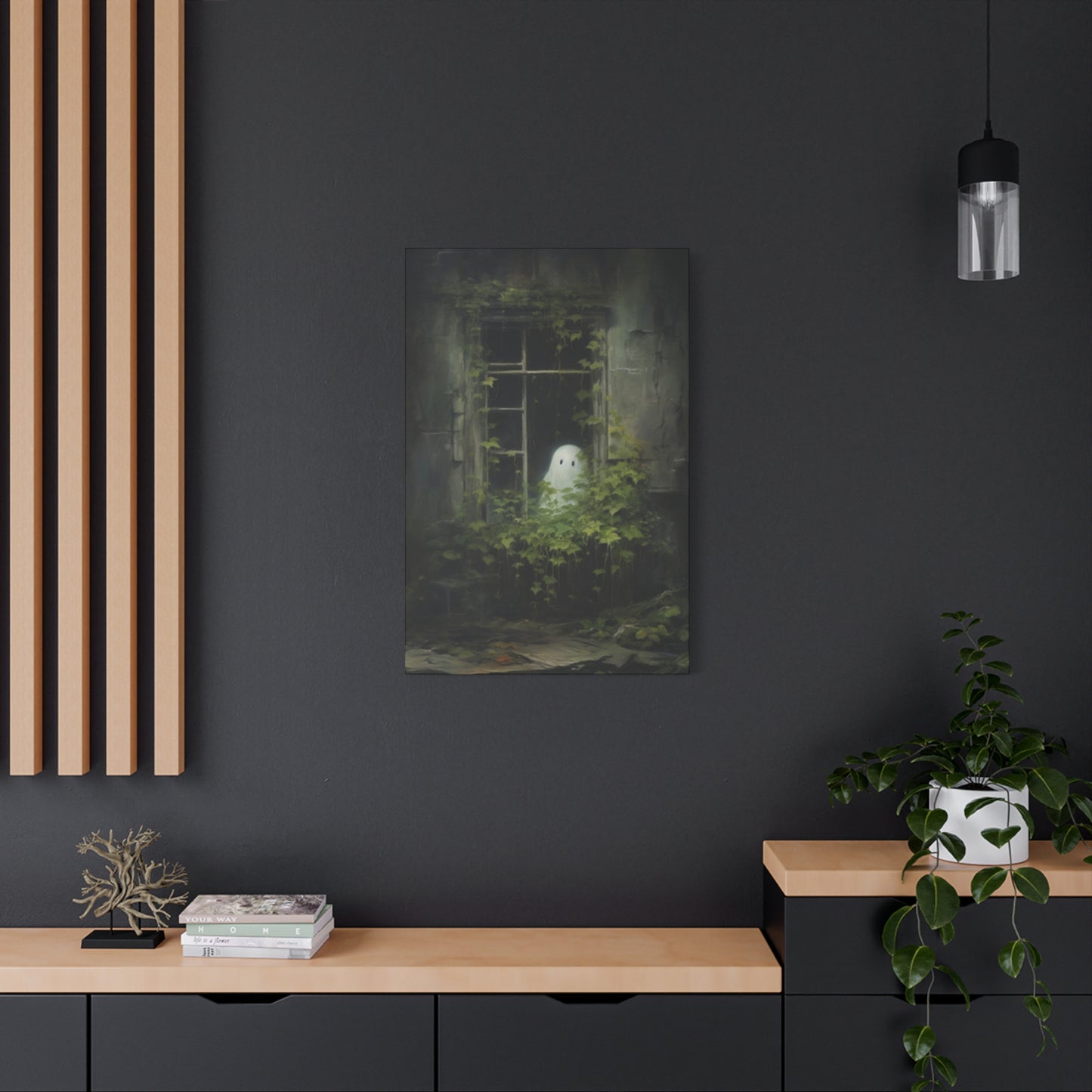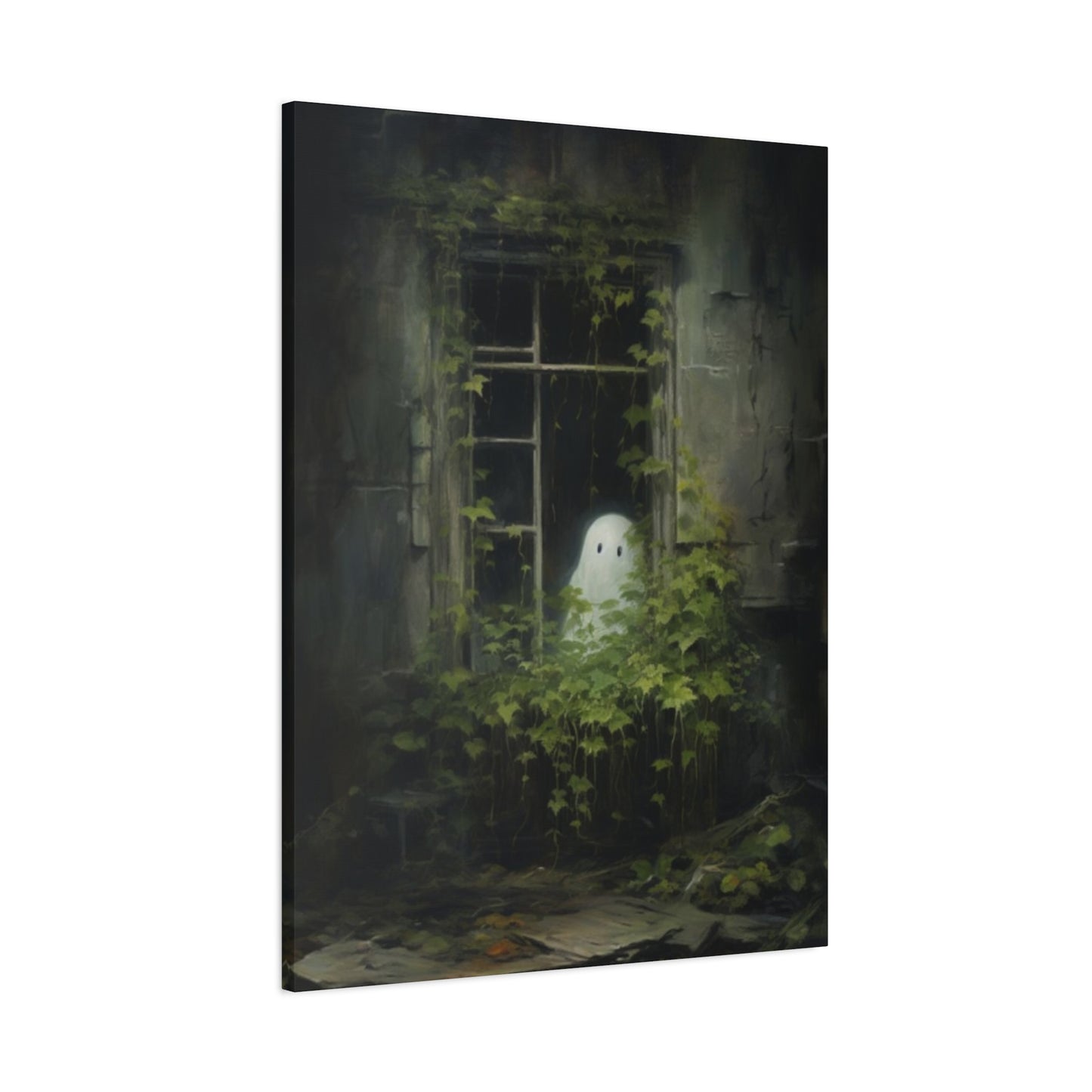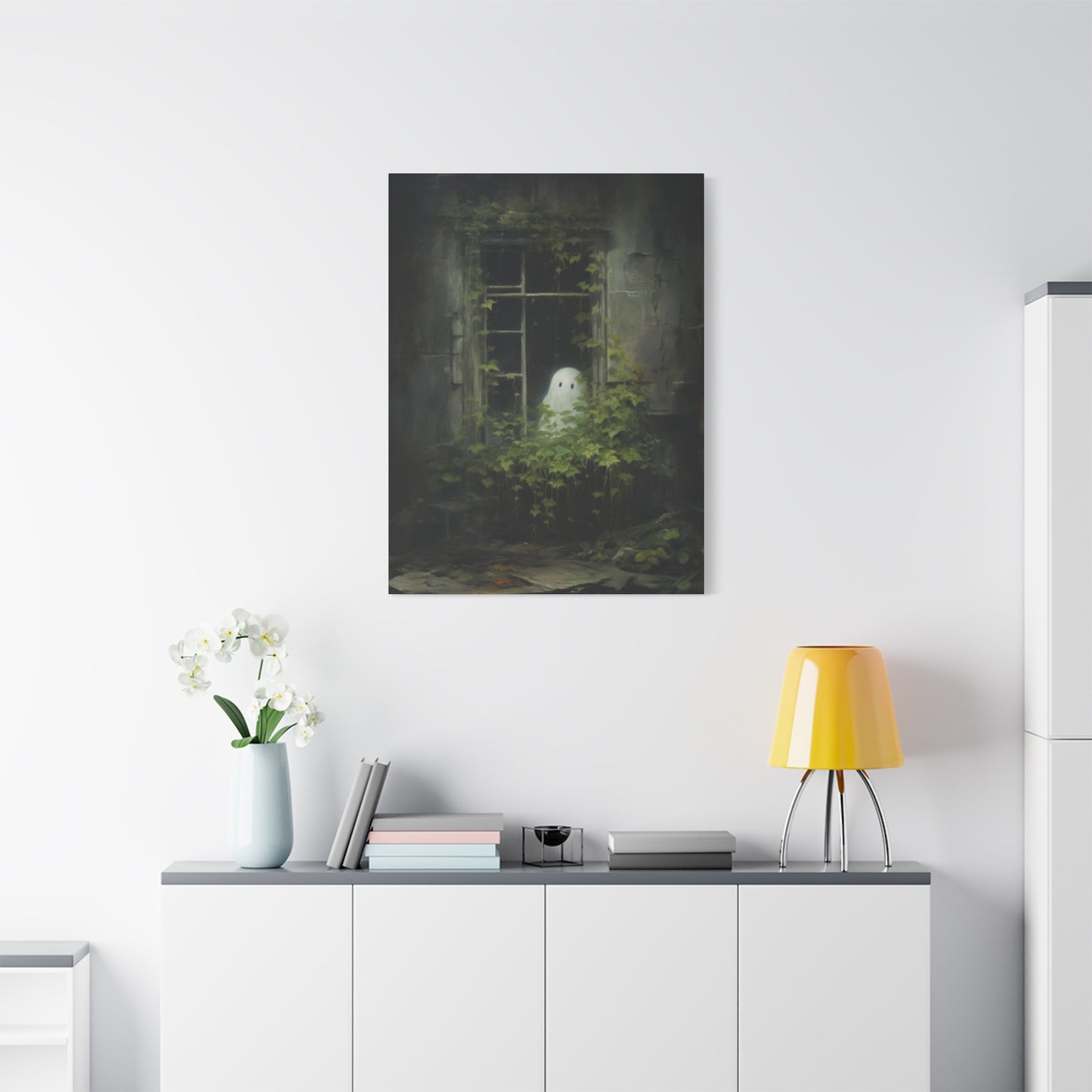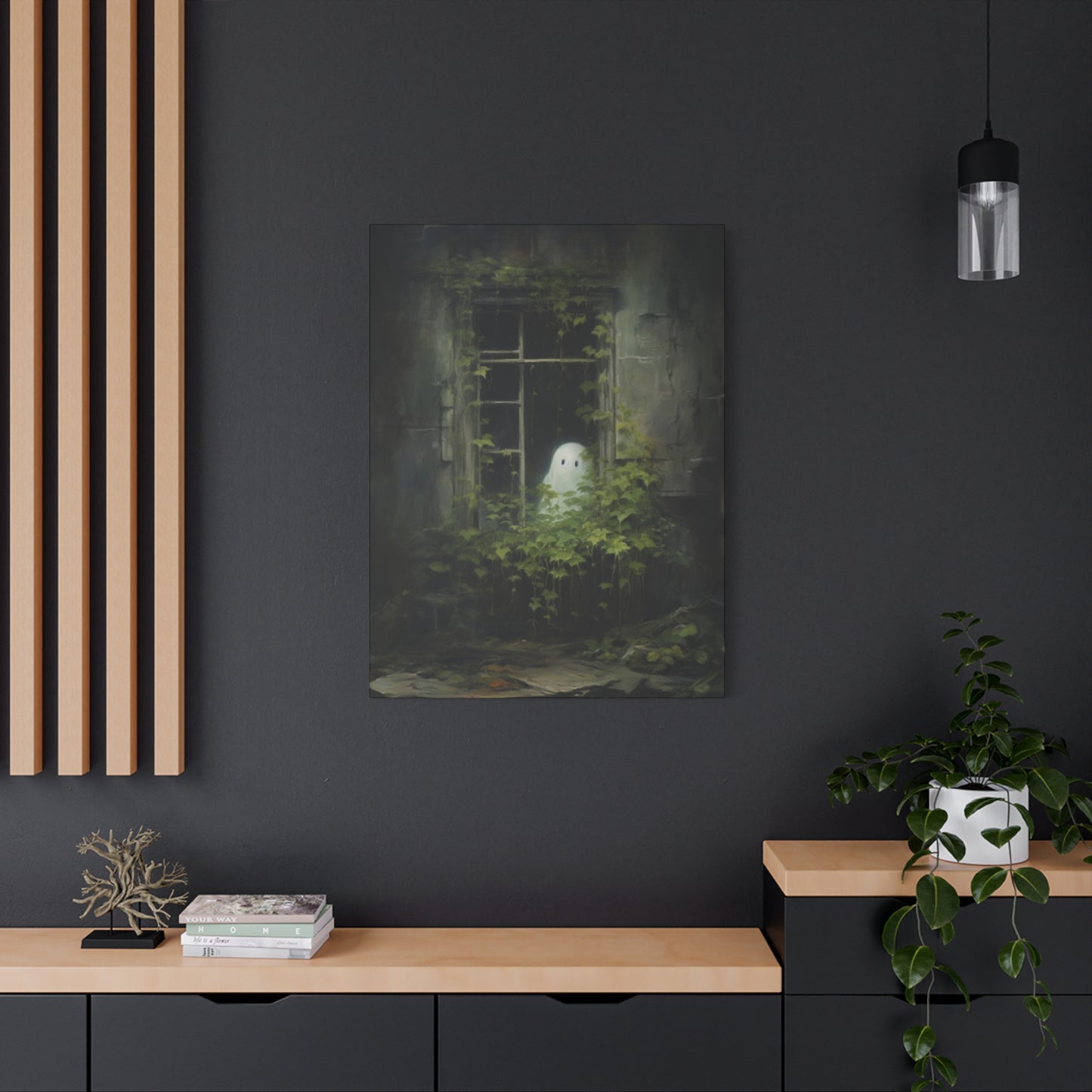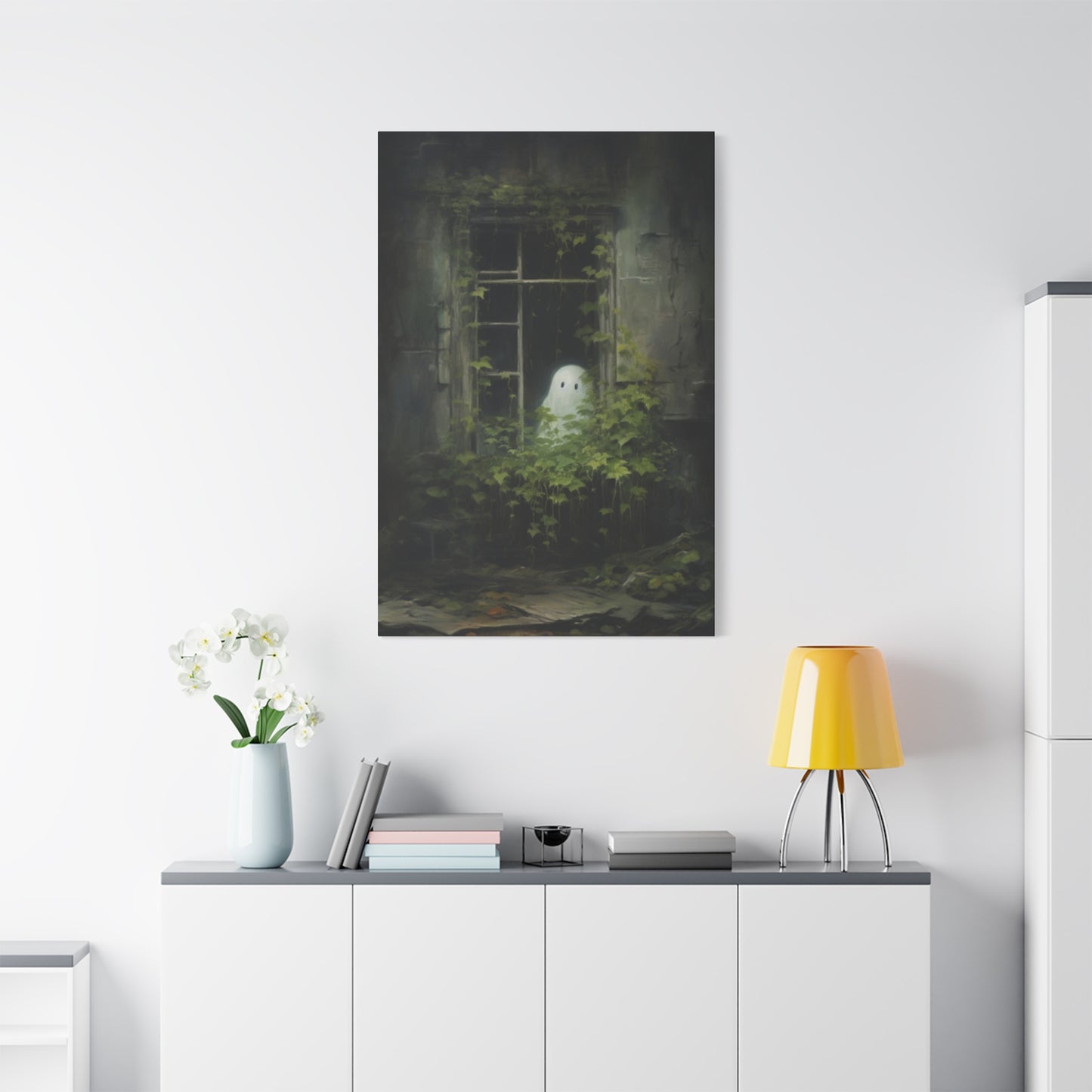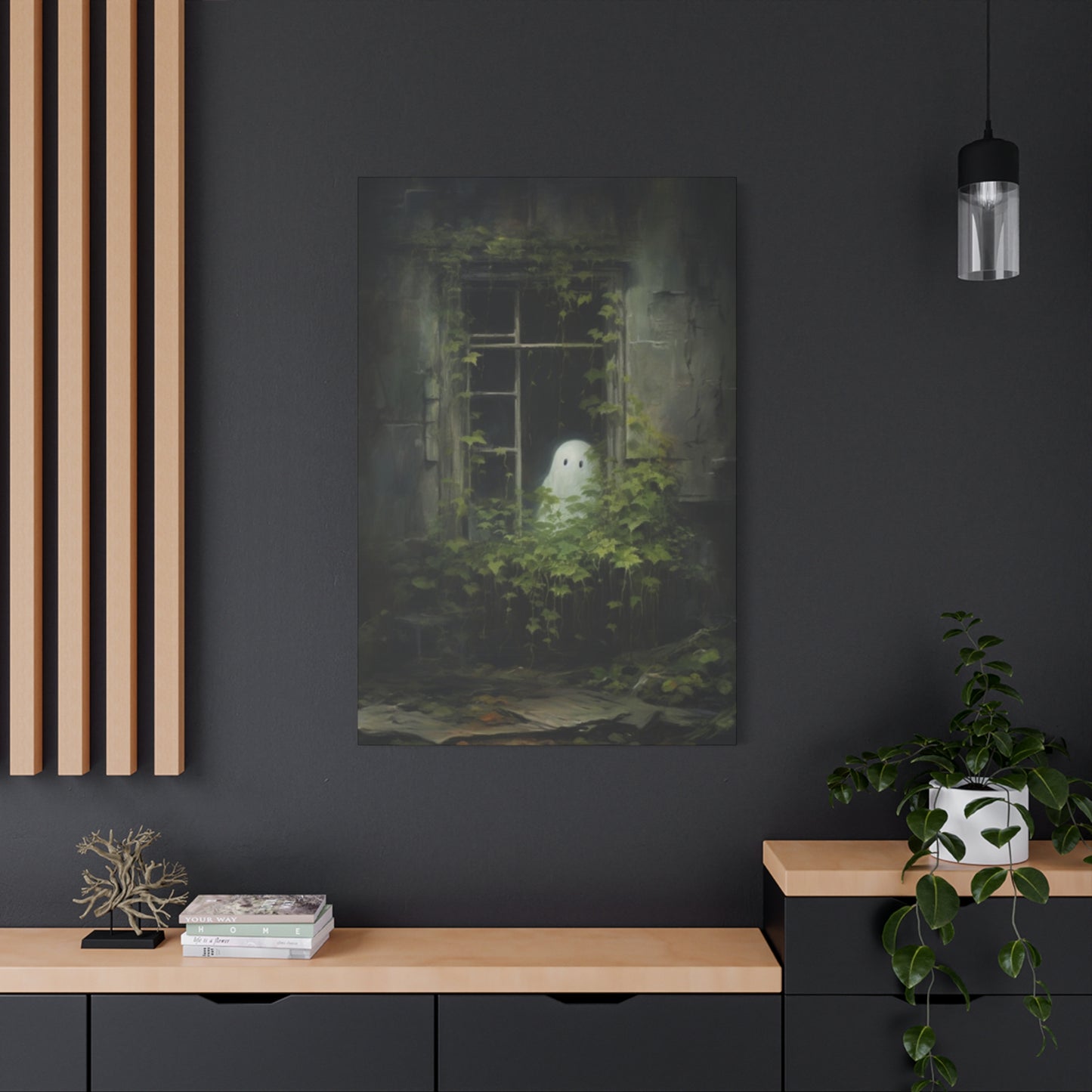Halloween Window Wall Art: Creative Canvas Ideas for Spine-Chilling Seasonal Décor
Halloween brings with it an irresistible urge to transform our homes into atmospheric haunts that capture the essence of all things spooky and supernatural. Among the most captivating and versatile decorative elements you can incorporate into your seasonal setup are window-themed canvas prints and paintings that create the illusion of peering into otherworldly realms. These remarkable pieces of wall art serve as portals to mysterious dimensions, offering glimpses of ghostly figures, haunted landscapes, and eerie scenes that seem to come alive when the lights dim and shadows dance across your walls.
Window wall art possesses a unique psychological impact that sets it apart from conventional Halloween decorations. The human mind is naturally drawn to windows as symbols of connection between indoor and outdoor worlds, between the known and unknown, between safety and danger. When you incorporate window-themed artwork into your Halloween décor, you're tapping into these primal associations while creating visual depth that makes rooms feel larger and more mysterious. The best window wall art pieces don't just hang on your walls – they seem to open new dimensions within your living areas.
The artistry behind effective Halloween window wall art lies in its ability to blur the boundaries between reality and imagination. These pieces work by creating optical illusions that make viewers feel as though they're looking through actual windows into haunted scenes. The most successful designs incorporate realistic architectural elements like window frames, mullions, and glass reflections, while the views beyond reveal supernatural scenes that couldn't possibly exist in the real world. This juxtaposition of familiar window elements with fantastical imagery creates a powerful sense of unease and wonder that perfectly captures the Halloween spirit.
Ghostly Apparitions Through Canvas Windows
When selecting Halloween window wall art featuring ghostly apparitions, the key lies in understanding how spectral figures can be most effectively portrayed through the window motif. The most compelling ghostly window art pieces feature translucent figures that appear to be pressing against glass, reaching through barriers between worlds, or simply observing from beyond. These ethereal beings often possess an otherworldly luminescence that seems to glow from within the canvas, creating an effect that becomes even more pronounced in dimly lit environments.
The artistic techniques used to create convincing ghostly apparitions in window art involve careful attention to transparency, lighting, and movement suggestion. Master artists working in this genre understand that ghosts should never appear completely solid – instead, they utilize various opacity levels to suggest beings that exist between physical and spiritual realms. The most effective pieces show ghosts with partially visible features, flowing garments that seem to move in unfelt breezes, and expressions that convey eternal longing or unfinished business.
Color palettes for ghostly window art typically revolve around cool tones like pale blues, silvery whites, and subtle purples that suggest moonlight and mist. However, some artists incorporate warm amber tones to suggest candlelight or firelight emanating from haunted dwellings visible through the windows. The contrast between these warm and cool elements creates visual interest while maintaining the eerie atmosphere essential to effective Halloween wall art.
The positioning of ghostly figures within window compositions requires careful consideration of viewer psychology. Figures positioned directly in the center of windows create confrontational effects that can startle viewers, while ghosts placed to one side or partially obscured by window frames suggest movements and create more subtle, creeping feelings of unease. Some of the most effective pieces feature multiple ghostly figures at different distances from the window, creating layered compositions that reward closer inspection.
When incorporating ghostly window wall art into your Halloween décor scheme, consider the lighting conditions in your chosen display areas. These pieces often benefit from strategic backlighting or side lighting that can enhance the translucent qualities of the ghostly figures while creating interesting shadow effects on surrounding walls. The interplay between artificial lighting and the painted luminescence of spectral beings can create truly magical atmospheric effects.
Haunted Landscapes Behind Glass
Haunted landscape window art offers viewers glimpses into cursed territories, abandoned graveyards, twisted forests, and desolate moors that stretch beyond the confines of normal reality. These pieces work by creating the illusion that your walls have been breached by windows looking out onto supernatural realms where natural laws don't apply and danger lurks behind every shadow. The most effective haunted landscape window art combines realistic environmental details with subtle supernatural elements that gradually reveal themselves upon closer examination.
The composition of haunted landscape window art requires careful balance between familiar natural elements and otherworldly distortions. Successful pieces might feature recognizable elements like trees, hills, and buildings, but these familiar forms are twisted into unnatural configurations that suggest malevolent forces at work. Dead trees might reach toward viewers like grasping skeletal hands, while distant buildings might possess architectural impossibilities that defy logic and create unsettling feelings of wrongness.
Weather effects play crucial roles in establishing the mood of haunted landscape window art. Perpetual storms, unnatural mists, and impossible lighting conditions help establish that these views peer into realms where normal meteorological rules don't apply. The most compelling pieces feature weather that seems to exist in multiple states simultaneously – perhaps combining bright moonlight with dark storm clouds, or showing mist that glows with its own internal light while obscuring threatening shapes in the distance.
The depth of field in haunted landscape window art requires special attention to create convincing illusions of vast supernatural territories extending beyond the window frames. Artists achieve this through careful layering of foreground, middle ground, and background elements, using atmospheric perspective to suggest enormous distances while maintaining enough detail to keep viewers engaged. The most effective pieces feature subtle details in the far distance that become visible only upon close inspection, rewarding viewers who take time to explore the entire composition.
Color schemes for haunted landscape window art often emphasize unnatural color relationships that wouldn't occur in normal environments. Sickly yellow-green skies, purple shadows, and blood-red moons help establish that these landscapes exist outside normal reality. However, the most sophisticated pieces use these unnatural colors sparingly, grounding them with enough natural earth tones to maintain believability while gradually introducing supernatural elements that build tension and unease.
Victorian Gothic Window Scenes
Victorian Gothic window wall art draws inspiration from the architectural grandeur and supernatural fascinations of the 19th century, creating pieces that seem to peer into grand but decaying mansions, abandoned conservatories, and fog-shrouded London streets where gaslight struggles against encroaching darkness. These sophisticated pieces combine historical authenticity with supernatural elements, creating window views that transport viewers into the atmospheric world of classic Gothic literature and Victorian ghost stories.
The architectural elements featured in Victorian Gothic window art require careful attention to period-appropriate details. Ornate window frames with intricate moldings, leaded glass patterns, and heavy drapery all contribute to the authentic Victorian atmosphere. The most convincing pieces incorporate these architectural details as integral parts of the composition rather than mere decorative elements, using them to frame and enhance the supernatural scenes beyond.
The interior scenes visible through Victorian Gothic windows often feature period-appropriate furnishings, wallpapers, and decorative objects, but these familiar elements are arranged in ways that suggest abandonment, decay, or supernatural disturbance. Overturned furniture, portraits with eyes that seem to follow viewers, and candlesticks with flames that burn impossible colors all contribute to the unsettling atmosphere that defines effective Victorian Gothic wall art.
The lighting in Victorian Gothic window scenes typically relies on period-appropriate sources like candles, oil lamps, and early gas fixtures, but these light sources behave in supernatural ways that violate natural laws. Candle flames might burn without consuming their wicks, lamplight might cast shadows that don't correspond to the objects that should create them, and gaslight might flicker in patterns that spell out ghostly messages or reveal hidden figures lurking in dark corners.
The figures that populate Victorian Gothic window scenes often wear period-appropriate clothing and hairstyles, but their faces might be obscured by shadows, their forms might be translucent, or their movements might suggest they exist in different time periods simultaneously. The most effective pieces feature figures that seem unaware of being observed, going about their eternal routines in haunted mansions that exist outside normal time and causality.
Forest Window Views with Supernatural Elements
Supernatural forest window art creates the illusion of looking out into dark woodlands where ancient trees harbor secrets, mystical creatures move through shadows, and the very atmosphere seems alive with otherworldly energy. These pieces tap into primal fears and fascinations with deep forests while incorporating supernatural elements that transform familiar natural settings into realms of mystery and potential danger.
The trees featured in supernatural forest window art often possess characteristics that suggest consciousness and malevolent intent. Branches might be arranged to resemble grasping arms, tree bark might contain faces or eyes that seem to watch viewers, and root systems might form patterns that suggest underground networks of supernatural communication. The most effective pieces balance these anthropomorphic elements with realistic botanical details that maintain believability while gradually introducing unsettling supernatural elements.
The lighting conditions in supernatural forest window scenes typically feature multiple impossible light sources that create contradictory shadows and illuminate elements that should remain hidden in natural forest environments. Moonlight might penetrate dense canopy in ways that defy physics, while mysterious glowing orbs, foxfire, and other supernatural illumination sources create pools of light that reveal creatures and phenomena that couldn't exist in normal forests.
The creatures inhabiting supernatural forest window art range from traditional folkloric beings like faeries, spirits, and woodland guardians to more sinister entities that suggest ancient curses and supernatural dangers. The most sophisticated pieces feature these creatures as subtle elements that might not be immediately apparent to casual observers, requiring careful examination to fully appreciate the supernatural population of these haunted woodlands.
The atmospheric effects in supernatural forest window art often feature impossible weather patterns and environmental conditions that establish these forests as existing outside normal reality. Perpetual mists that move against wind patterns, snow that falls upward, and pools of water that reflect scenes different from their immediate surroundings all contribute to the otherworldly atmosphere that makes these window views effective Halloween wall art elements.
Urban Nightmare Window Perspectives
Urban nightmare window art presents views of cities transformed by supernatural forces, where familiar metropolitan environments become stages for horror scenarios that blend modern anxieties with classic supernatural themes. These pieces often feature recognizable urban elements like skyscrapers, street lights, and traffic patterns, but these familiar elements are distorted by supernatural influences that turn cities into mazes of terror and confusion.
The architectural elements in urban nightmare window art often feature buildings that violate natural laws of construction and physics. Skyscrapers might twist into impossible spirals, streets might lead in directions that defy geography, and familiar landmarks might be combined in ways that create unsettling cognitive dissonance. The most effective pieces maintain enough realistic detail to establish urban environments while gradually introducing supernatural distortions that transform cities into nightmare landscapes.
The lighting in urban nightmare window scenes typically features the artificial illumination sources common to modern cities, but these lights behave in supernatural ways that create atmosphere and tension. Street lights might flicker in coordinated patterns that spell out warnings, neon signs might display messages that change when viewers aren't looking directly at them, and building windows might glow with colors that don't correspond to any known artificial light source.
The inhabitants of urban nightmare window art often include recognizable urban archetypes like pedestrians, drivers, and workers, but these figures exhibit supernatural characteristics or behaviors that establish the cities as existing under supernatural influence. People might move in synchronized patterns that suggest external control, their shadows might not match their physical forms, or they might possess features that become apparent only upon close examination.
The weather and atmospheric conditions in urban nightmare window art frequently feature environmental phenomena that couldn't occur in normal urban settings. Fog might rise from manholes and form shapes that suggest supernatural entities, rain might fall in impossible patterns, and wind might carry sounds and scents that transport viewers to different times and places within the same urban landscape.
Cemetery and Graveyard Window Views
Cemetery window wall art creates the illusion of looking out onto graveyards, burial grounds, and memorial gardens where the boundary between life and death becomes permeable, allowing supernatural entities to move freely between worlds. These pieces combine the solemn dignity of memorial environments with supernatural elements that suggest these sacred grounds serve as gathering places for spirits and other otherworldly beings.
The monument and headstone designs featured in cemetery window art often incorporate historical accuracy with supernatural elements that suggest the graves contain more than ordinary human remains. Headstones might bear inscriptions that change depending on viewing angle, memorial statues might appear to move when viewers aren't looking directly at them, and mausoleums might emit subtle glows that suggest supernatural activity within their confines.
The landscape elements in cemetery window art typically feature the carefully maintained grounds common to well-established burial sites, but these familiar elements are enhanced with supernatural characteristics that establish the graveyards as supernatural gathering places. Ancient trees might have grown in patterns that suggest supernatural guidance, pathways might lead to destinations that shouldn't exist within the cemetery boundaries, and gardens might feature plants that bloom in impossible seasons or colors.
The supernatural inhabitants of cemetery window art often include traditional graveyard spirits, but the most effective pieces also feature more unusual entities that suggest complex supernatural ecosystems existing within these sacred grounds. Ghostly groundskeepers might tend graves that don't appear on any official cemetery maps, spectral mourners might visit graves of people who never died, and supernatural guardians might protect the boundary between the living and dead worlds.
The atmospheric conditions in cemetery window art frequently feature environmental elements that enhance the supernatural atmosphere while maintaining the dignity appropriate to memorial settings. Perpetual twilight might suggest these graveyards exist outside normal time, mysterious mists might rise from graves to form shapes that reveal supernatural messages, and seasonal changes might occur in impossible combinations that create beautiful but unsettling visual effects.
Abandoned Building Window Art
Abandoned building window wall art offers glimpses into structures that have been left to decay and supernatural forces, creating haunted environments where the histories of former inhabitants continue to play out in ghostly reenactments. These pieces combine architectural decay with supernatural activity to create window views that suggest entire buildings serving as repositories for unresolved supernatural energy and unfinished spiritual business.
The architectural details in abandoned building window art require careful attention to realistic decay patterns while incorporating supernatural elements that suggest otherworldly influences on the deterioration process. Wallpaper might peel in patterns that reveal hidden messages, broken windows might reflect scenes from different time periods, and structural damage might occur in ways that create symbols or patterns with supernatural significance.
The furniture and personal belongings visible through abandoned building windows often tell stories of sudden departure or supernatural intervention that forced inhabitants to leave their possessions behind. The most effective pieces feature arrangements of objects that suggest interrupted daily routines, with items positioned in ways that create narrative tension and invite viewers to imagine the circumstances that led to the building's abandonment.
The supernatural activity depicted in abandoned building window art ranges from subtle environmental disturbances to dramatic manifestations that suggest powerful spiritual presences inhabiting these decaying structures. Doors might open and close without visible cause, shadows might move independently of any objects that could cast them, and lights might flicker in patterns that suggest attempts at supernatural communication.
The lighting conditions in abandoned building window art typically feature the interplay between natural light entering through damaged roofs and windows with supernatural illumination sources that suggest spiritual activity. Sunbeams might reveal floating dust particles that form recognizable shapes, while mysterious glows might emanate from rooms that shouldn't contain any light sources.
Witch Cottage Window Scenes
Witch cottage window wall art presents views of mystical dwellings where practitioners of ancient arts live surrounded by magical implements, supernatural companions, and environments that respond to their magical influence. These pieces combine folkloric elements with sophisticated magical symbolism to create window views that transport viewers into worlds where magic is real and witches wield power over natural and supernatural forces.
The architectural elements of witch cottage window art often feature irregular construction that suggests these dwellings were built using magical rather than conventional building techniques. Rooms might be larger inside than outside dimensions would permit, staircases might lead to floors that shouldn't exist, and windows might offer views of landscapes that exist in different seasons or time periods simultaneously.
The magical implements and ingredients visible through witch cottage windows typically include traditional witchcraft tools like cauldrons, grimoires, crystal balls, and herb collections, but these familiar elements are enhanced with supernatural characteristics that suggest their active magical properties. Cauldrons might bubble without heat sources, books might open to pages that provide answers to viewers' unspoken questions, and magical ingredients might glow with their own internal energy.
The supernatural companions featured in witch cottage window art often include traditional familiar animals like cats, ravens, and owls, but these creatures possess obviously supernatural characteristics that establish them as magical beings rather than ordinary animals. Cats might have eyes that reflect scenes from different dimensions, ravens might carry messages written in languages that shift and change, and owls might possess knowledge that becomes apparent through their unnaturally intelligent expressions.
The magical activities depicted in witch cottage window scenes range from traditional spellcasting and potion brewing to more elaborate magical workings that involve manipulation of time, space, and natural forces. The most sophisticated pieces suggest complex magical processes through subtle visual cues that reward careful observation and create a sense that viewers are witnessing real magical practices.
Moonlit Window Landscapes
Moonlit window landscape wall art creates dramatic nighttime scenes where moonlight transforms familiar environments into mysterious realms filled with shadows, silver light, and nocturnal creatures that emerge only under lunar influence. These pieces utilize the romantic and supernatural associations of moonlight to create window views that seem to peer into worlds where night rules supreme and daylight never penetrates the eternal darkness.
The moon itself plays a central role in these window compositions, often appearing as an oversized presence that dominates the night sky and casts impossible amounts of light on the landscape below. The most effective pieces feature moons with subtle supernatural characteristics – perhaps faces visible in the lunar surface, colors that shift between silver and other hues, or sizes that change depending on viewing angle.
The landscape elements in moonlit window art are transformed by the supernatural quality of the lunar illumination, creating environments that exist only under night conditions. Trees might cast shadows that don't correspond to their actual shapes, bodies of water might reflect scenes that differ from their immediate surroundings, and familiar daytime landmarks might reveal hidden supernatural characteristics that become visible only under moonlight.
The nocturnal creatures featured in moonlit window art range from realistic animals like owls, bats, and wolves to supernatural beings that emerge only during nighttime hours. The most sophisticated pieces feature creatures whose supernatural nature becomes apparent through subtle details – perhaps eyes that glow with their own light, movements that defy natural physics, or behaviors that suggest intelligence beyond normal animal cognition.
The atmospheric effects in moonlit window landscapes often feature impossible environmental conditions that establish these scenes as existing outside normal reality. Mists might glow with reflected moonlight while forming shapes that suggest supernatural entities, wind patterns might create sounds that resemble voices or music, and temperature effects might be visible in ways that contradict normal meteorological principles.
Storm Window Art with Lightning Effects
Storm window wall art captures the raw power and supernatural potential of severe weather events, creating dramatic scenes where lightning illuminates landscapes and reveals supernatural phenomena that exist only during extreme weather conditions. These pieces combine the natural drama of storms with supernatural elements that suggest these weather events serve as conduits between normal reality and otherworldly realms.
The lightning effects in storm window art often possess supernatural characteristics that distinguish them from normal electrical phenomena. Lightning bolts might strike in patterns that form recognizable symbols, illuminate scenes that exist in different time periods, or reveal landscapes that shouldn't be visible from the window's perspective. The most effective pieces use lightning as both a dramatic visual element and a narrative device that unveils supernatural secrets hidden within the storm.
The cloud formations in storm window art frequently feature impossible shapes and colors that suggest supernatural influence on weather patterns. Clouds might form faces or symbols that become apparent only when illuminated by lightning, move in patterns that defy meteorological principles, or contain colors that don't occur in natural storm systems. These supernatural cloud characteristics help establish the storms as otherworldly events rather than normal weather phenomena.
The landscape elements revealed by storm lighting often include familiar environmental features that have been transformed by supernatural forces associated with severe weather. Buildings might appear and disappear with each lightning flash, trees might change shape or position between illuminations, and bodies of water might reflect scenes that differ dramatically from their actual surroundings.
The creatures and figures that populate storm window art are often revealed only during lightning flashes, creating dramatic moments of revelation that suggest these beings exist only during extreme weather conditions. The most sophisticated pieces use the intermittent illumination of lightning to create narrative sequences where supernatural entities move through the landscape between flashes, creating stories that unfold over multiple lightning strikes.
Underwater Window Illusions
Underwater window wall art creates the surreal illusion of windows submerged beneath supernatural bodies of water where normal physics don't apply and aquatic environments serve as gateways to otherworldly realms. These pieces combine familiar aquatic elements with supernatural characteristics to create window views that seem to peer into underwater dimensions where sea life possesses magical properties and submerged landscapes harbor ancient secrets.
The water effects in underwater window art require sophisticated artistic techniques to create convincing illusions of submersion while maintaining the supernatural elements that distinguish these pieces from realistic underwater scenes. Light refraction patterns might reveal hidden images or messages, water currents might move in impossible directions, and the water itself might possess colors or transparency levels that suggest supernatural properties.
The aquatic life featured in underwater window art often includes recognizable sea creatures enhanced with supernatural characteristics that establish these underwater realms as magical environments. Fish might possess bioluminescent patterns that spell out mystical symbols, sea plants might move in response to unseen forces, and larger marine creatures might display intelligence and awareness that suggest supernatural consciousness.
The submerged landscapes visible through underwater windows frequently feature elements that couldn't exist in normal underwater environments – perhaps submerged forests with trees that continue growing beneath the water, underwater cities inhabited by supernatural beings, or geological formations that defy understanding of natural underwater erosion patterns.
The lighting conditions in underwater window art often feature impossible illumination sources that create dramatic visual effects while establishing the supernatural nature of these aquatic environments. Mysterious glowing objects might provide illumination that penetrates water in ways that violate physics, while supernatural creatures might emit their own light in patterns that create beautiful but impossible underwater lighting effects.
Medieval Castle Window Views
Medieval castle window wall art presents views from ancient fortifications where historical authenticity combines with supernatural elements to create windows that seem to peer into medieval realms where magic coexists with feudal society. These pieces require careful attention to historical architectural details while incorporating supernatural elements that transform familiar medieval environments into fantasy realms where anything becomes possible.
The architectural elements visible through medieval castle windows must maintain historical accuracy while suggesting supernatural modifications that establish these fortifications as existing in magical rather than purely historical contexts. Castle walls might incorporate mystical symbols into their stonework, towers might extend higher than structural engineering would permit, and defensive features might serve magical as well as military purposes.
The landscapes visible from medieval castle windows often feature countryside settings that combine historical accuracy with supernatural elements that suggest these territories exist under magical influence. Medieval agricultural patterns might be arranged in mystical symbols visible only from castle heights, forests might harbor creatures and phenomena that don't exist in normal historical contexts, and distant mountains might possess characteristics that suggest supernatural significance.
The inhabitants of medieval castle window art typically include period-appropriate figures like knights, nobles, and castle staff, but these characters often possess subtle supernatural characteristics that establish the castles as existing in fantasy rather than purely historical contexts. Knights might wear armor that glows with supernatural light, nobles might possess features that suggest otherworldly ancestry, and castle staff might go about their duties with efficiency that suggests magical assistance.
The activities depicted in medieval castle window scenes range from historically accurate daily routines to obviously supernatural events that establish these fortifications as centers of magical activity. The most sophisticated pieces balance historical authenticity with supernatural elements in ways that create believable fantasy environments that seem to exist in alternate versions of medieval society.
Foggy Window Art with Hidden Shapes
Foggy window wall art utilizes mist and atmospheric obscuration to create mysterious scenes where familiar shapes emerge and disappear within swirling fog banks, creating dynamic compositions that change depending on viewing angle and lighting conditions. These pieces tap into the psychological effects of partial visibility to create window views that seem to reveal and conceal supernatural secrets simultaneously.
The fog effects in these window art pieces require sophisticated artistic techniques to create convincing atmospheric perspection while maintaining the supernatural elements that distinguish magical mist from normal meteorological phenomena. Fog patterns might form recognizable shapes that suggest supernatural entities, move in ways that defy wind patterns, or possess colors and density variations that create impossible atmospheric effects.
The shapes hidden within foggy window art often include supernatural entities that become visible only under specific viewing conditions, creating interactive elements that reward careful observation. Ghostly figures might emerge from mist banks when viewed from certain angles, mystical creatures might move through fog in ways that create brief moments of visibility, and architectural structures might appear and disappear as fog density changes.
The landscapes partially obscured by fog in these window scenes typically feature familiar environmental elements that become mysterious and potentially threatening when visibility is limited. Trees might appear as threatening silhouettes that suggest supernatural characteristics, buildings might be partially visible in ways that make their true nature ambiguous, and pathways might disappear into fog banks that could lead anywhere.
The lighting effects in foggy window art often utilize backlighting and side lighting to create dramatic illumination that enhances the mysterious qualities of partial visibility. Light sources might create halos and god rays that penetrate fog in beautiful but impossible patterns, while shadowy areas might suggest hidden dangers that become apparent only when fog patterns shift to reveal previously hidden elements.
Seasonal Halloween Window Transitions
Seasonal transition window wall art captures the magical transformation of landscapes as they shift from autumn into winter, creating window views that celebrate the liminal period when natural changes mirror supernatural activities. These pieces utilize the visual drama of seasonal change to create window scenes that seem to exist in perpetual states of transformation where autumn and winter elements coexist in impossible combinations.
The foliage featured in seasonal transition window art often displays impossible combinations of autumn and winter characteristics that suggest supernatural influence on natural seasonal patterns. Trees might simultaneously display fall colors and winter snow, leaves might fall upward instead of down, and seasonal changes might occur in accelerated time frames that create visual drama while violating natural seasonal progression patterns.
The weather effects in seasonal transition window art frequently feature atmospheric conditions that combine elements from different seasons in ways that create beautiful but impossible environmental effects. Snow might fall on landscapes that still display full autumn foliage, autumn winds might carry winter scents and sounds, and temperature effects might be visible in combinations that suggest these landscapes exist outside normal seasonal progression.
The wildlife featured in seasonal transition window scenes often includes animals that display behaviors appropriate to different seasons simultaneously, suggesting that these environments exist in supernatural states where normal seasonal cycles don't apply. Migrating birds might fly in patterns that form mystical symbols, hibernating animals might remain active in ways that suggest supernatural influence, and seasonal animal behaviors might occur in combinations that create narrative elements within the window compositions.
The lighting conditions in seasonal transition window art typically feature combinations of autumn and winter lighting that create atmospheric effects impossible in normal seasonal environments. Autumn sunlight might illuminate winter snow in ways that create supernatural color combinations, while winter's low-angle sunlight might interact with autumn foliage to create lighting effects that suggest these landscapes exist in magical rather than natural seasonal states.
Candlelit Window Scenes
Candlelit window wall art creates intimate atmospheric scenes where flickering candlelight illuminates supernatural activities and creates dramatic contrasts between light and shadow that enhance the mysterious qualities of window compositions. These pieces utilize the romantic and supernatural associations of candlelight to create window views that seem to peer into realms where artificial illumination reveals secrets that would remain hidden in normal lighting conditions.
The candle flames featured in these window art pieces often possess supernatural characteristics that distinguish them from normal fire phenomena. Flames might burn in impossible colors, flicker in patterns that suggest supernatural communication, remain steady in conditions where they should be extinguished, or cast shadows that don't correspond to the objects that should create them. These supernatural flame characteristics help establish the candlelit environments as existing under magical influence.
The objects illuminated by supernatural candlelight often include familiar items that reveal hidden characteristics when exposed to magical illumination. Books might open to pages that provide answers to viewers' unspoken questions, mirrors might reflect scenes from different times or places, and portraits might seem to come alive under flickering candlelight that reveals supernatural properties in seemingly ordinary objects.
The architectural elements visible under candlelight in these window scenes typically feature period-appropriate details enhanced with supernatural characteristics that become apparent only under magical illumination. Wall textures might reveal hidden symbols or messages, doorways might lead to rooms that shouldn't exist within the building's structure, and windows might offer views of landscapes that change depending on candlelight intensity.
The figures that populate candlelit window art often include both living and supernatural beings whose true nature becomes apparent under magical illumination. Living figures might cast shadows that don't match their physical forms, while supernatural entities might become visible only under candlelight conditions that reveal their presence to viewers who possess the supernatural sensitivity to perceive them.
Mirror Window Art Reflections
Mirror window wall art creates complex optical illusions that combine window views with reflective surfaces, creating compositions where viewers see both through and into supernatural realms simultaneously. These sophisticated pieces utilize the psychological and supernatural associations of mirrors to create window art that suggests multiple dimensions existing in the same visual plane.
The mirror effects in these window art pieces require careful attention to realistic reflection patterns while incorporating supernatural elements that distinguish magical mirrors from normal reflective surfaces. Reflections might show scenes from different time periods, reveal supernatural entities not visible in the direct view, or display impossible geometric relationships that suggest these mirrors serve as portals between dimensions.
The architectural elements that incorporate both window and mirror characteristics often feature impossible structural relationships that create visual puzzles requiring careful observation to understand. Window frames might also serve as mirror frames, glass surfaces might simultaneously transmit and reflect light in ways that violate physics, and architectural perspectives might shift depending on whether viewers focus on the window view or mirror reflection.
The supernatural entities visible through mirror window combinations often exist in different states simultaneously – perhaps appearing solid in reflections while remaining translucent in direct views, or displaying different characteristics when viewed through mirrors versus windows. These complex visual relationships create sophisticated supernatural narratives that reward careful observation and interpretation.
The lighting effects in mirror window art often utilize impossible illumination patterns that enhance the supernatural qualities of combined reflective and transmissive visual elements. Light sources might illuminate objects differently in reflections versus direct views, mirrors might glow with their own internal light, and window illumination might interact with mirror reflections to create complex lighting patterns that suggest supernatural optical phenomena.
Steampunk Window Art Elements
Steampunk window wall art combines Victorian-era industrial aesthetics with supernatural elements to create window views that peer into alternate history realms where steam technology coexists with magical forces. These pieces require careful attention to authentic steampunk design elements while incorporating supernatural characteristics that transform familiar industrial environments into fantasy realms where anything becomes possible.
The mechanical elements featured in steampunk window art often include recognizable industrial components like gears, pipes, and steam engines, but these familiar devices possess supernatural characteristics that suggest they operate using magical as well as mechanical principles. Gears might turn without visible power sources, steam might form patterns that spell out mystical messages, and mechanical devices might perform functions that violate known engineering principles.
The architectural elements in steampunk window scenes typically feature industrial construction enhanced with supernatural modifications that suggest these environments exist in alternate reality versions of Victorian society. Buildings might incorporate impossible structural elements that combine industrial materials with magical construction techniques, while infrastructure might serve supernatural as well as practical functions.
The inhabitants of steampunk window art often include period-appropriate figures enhanced with supernatural characteristics that establish these environments as fantasy rather than purely historical settings. Inventors might create devices that utilize magical as well as mechanical principles, workers might possess supernatural abilities that enhance their industrial productivity, and social hierarchies might be influenced by magical as well as economic factors.
The atmospheric conditions in steampunk window art frequently feature environmental effects that combine industrial pollution with supernatural phenomena to create unique atmospheric characteristics. Steam might possess colors and behaviors that suggest magical properties, while industrial emissions might form patterns that create supernatural atmospheric effects unique to these alternate history environments.
Library Window Art with Mystical Books
Library window wall art creates scholarly environments where ancient books contain supernatural knowledge and reading becomes a magical activity that opens doorways to otherworldly realms. These pieces combine the traditional atmosphere of academic libraries with supernatural elements that transform familiar educational environments into centers of mystical learning where books possess their own supernatural consciousness and power.
The books featured in mystical library window art often display supernatural characteristics that distinguish them from ordinary volumes. Books might open themselves to pages that provide answers to viewers' unspoken questions, texts might shift and change to reveal hidden meanings, and volumes might glow with their own internal illumination that suggests they contain knowledge beyond normal academic subjects.
The library architecture visible through these windows typically features traditional scholarly design elements enhanced with supernatural modifications that suggest these libraries serve magical as well as educational purposes. Bookshelves might extend higher than normal ceiling heights would permit, reading areas might be illuminated by impossible light sources, and library organization might follow mystical rather than conventional cataloging systems.
The scholars and researchers depicted in mystical library window art often possess supernatural abilities that enhance their academic pursuits. Readers might absorb knowledge at impossible rates, researchers might communicate with the supernatural consciousness of ancient books, and librarians might possess magical abilities that help them locate volumes containing exactly the information seekers require.
The atmosphere in mystical library window scenes frequently features environmental conditions that enhance the magical qualities of scholarly pursuit. Ancient dust might form patterns that reveal hidden messages, while library air might carry scents and sounds that transport readers to different times and places described in the supernatural books they're studying.
Dragon Window Art Perspectives
Dragon window wall art presents views of realms where these magnificent creatures soar through impossible skies and inhabit landscapes that showcase their supernatural power and ancient wisdom. These pieces combine realistic dragon anatomy with fantastical environments to create window views that transport viewers into fantasy realms where dragons serve as guardians, destroyers, or wise counselors depending on their individual characteristics and motivations.
The dragons featured in these window art pieces often display characteristics that go beyond traditional medieval European dragon imagery, incorporating elements from various cultural dragon traditions while adding unique supernatural abilities that establish each creature as a distinct personality. Dragons might possess multiple heads that think independently, change colors depending on their emotional states, or breathe substances other than fire that create unique magical effects.
The landscapes inhabited by dragons in these window scenes typically feature environments that reflect the supernatural power of these creatures while providing suitable habitats for beings that exist partially outside normal reality. Mountain peaks might be shaped by dragon activity, bodies of water might possess magical properties from dragon influence, and vegetation might display supernatural characteristics from exposure to dragon magic.
The interactions between dragons and other fantasy creatures visible through these windows often suggest complex supernatural ecosystems where dragons serve as apex magical predators or benevolent guardians depending on their individual nature and the specific fantasy realm they inhabit. Smaller creatures might display adaptive characteristics that help them coexist with dragons, while some beings might possess magical abilities that allow them to communicate with or even control these powerful entities.
The atmospheric effects in dragon window art frequently feature environmental conditions that reflect dragon influence on their surroundings. Air currents might follow patterns created by dragon flight, weather systems might be influenced by dragon emotional states, and magical aurora effects might result from dragon interactions with supernatural energy fields that permeate these fantasy realms.
Potion Room Window Views
Potion room window wall art offers glimpses into alchemical laboratories where magical practitioners brew supernatural concoctions using ingredients and techniques that combine traditional herbalism with pure magical energy. These pieces feature detailed depictions of alchemical equipment, mystical ingredients, and brewing processes that create believable magical environments where potion-making serves both practical and supernatural purposes.
The alchemical equipment featured in potion room window art often includes recognizable implements like cauldrons, distillation apparatus, and measuring devices, but these familiar tools possess supernatural characteristics that distinguish magical laboratories from normal chemistry facilities. Cauldrons might bubble without heat sources, distillation tubes might contain liquids that flow upward, and measuring devices might display results that change depending on the magical properties of substances being measured.
The ingredients visible in potion room windows typically include both familiar botanical specimens and obviously supernatural materials that establish these laboratories as serving magical rather than conventional purposes. Herbs might glow with their own internal light, crystals might pulse with magical energy, and preserved specimens might move within their containers as though still alive despite obvious preservation processes.
The magical practitioners working in these potion rooms often display supernatural abilities that enhance their alchemical pursuits. Brewers might levitate ingredients through telekinetic powers, measure substances using magical sensing abilities rather than conventional instruments, and combine ingredients in ways that create magical reactions impossible through normal chemical processes.
Conclusion
Halloween window wall art presents a unique and imaginative way to transform your home into a spine-chilling seasonal sanctuary. By creatively utilizing canvas art that echoes the eerie and whimsical spirit of Halloween, you can effortlessly enhance your decor with haunting visuals that captivate both residents and guests. This innovative approach blends artistry with festivity, turning ordinary windows and walls into dramatic canvases that bring the spooky season to life.
One of the most exciting aspects of Halloween window wall art is its versatility. From ghostly silhouettes and creepy cobweb patterns to wicked witches and ominous pumpkins, the range of creative ideas allows you to tailor your decor to your personal style and the desired level of fright. These art pieces can be bold and dramatic or subtle and atmospheric, making them suitable for a variety of spaces—from cozy living rooms to front porch windows that welcome trick-or-treaters.
Incorporating window-themed Halloween art also provides a fresh take on traditional seasonal decorations. Unlike typical paper cutouts or store-bought decals, canvas wall art offers a richer, more textured aesthetic that elevates the overall ambiance. The ability to mix and match different designs and sizes creates layered visual interest, allowing you to craft a dynamic and immersive Halloween environment that feels both curated and festive.
Moreover, Halloween window wall art is a great way to express creativity and set the mood for seasonal gatherings. It serves as a conversation starter and enhances the thematic cohesion of your Halloween party or home display. Paired with complementary elements such as eerie lighting, faux spider webs, and themed props, these canvases help complete a chillingly memorable atmosphere.
In conclusion, Halloween window wall art offers an inventive and stylish method to embrace the spooky season with flair. By incorporating creative canvas ideas into your seasonal décor, you can infuse your home with a spine-tingling charm that delights and impresses. Whether used as a centerpiece or as part of a larger Halloween display, this form of art brings festive creativity to your windows and walls—making your space a true haven of haunted beauty.

















